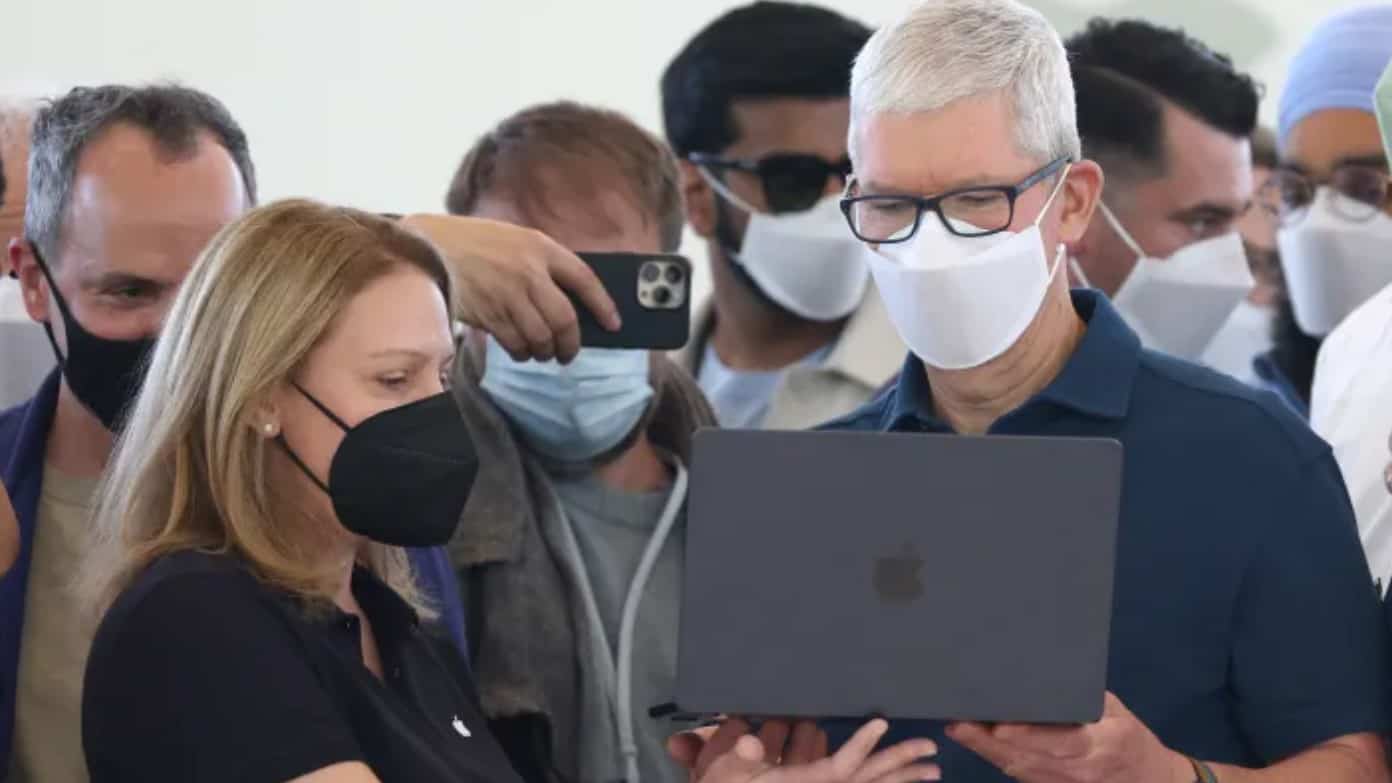Apple’s new laptops announced on Monday, featuring the iPhone maker’s next-generation in-house chips, might pose fresh challenges to Microsoft’s lucrative Windows business.
Since Apple started selling Macs powered by its homegrown M1 processors in late 2020, the company’s computer business has been picking up momentum. Earlier this week, Apple introduced the M2, which will debut in the new MacBook Air and 13-inch MacBook Pro.
The new chip will include 25% more transistors and 50% more bandwidth than M1.
Mikako Kitagawa, an analyst at technology industry research company Gartner, said Apple could continue picking up market share with the M2 architecture. In 2021, Apple held 7.9% of worldwide PC shipments by operating system, while Windows controlled 81.8%, according to Gartner’s estimates. The firm expects Apple’s share to move up to 10.7% in 2026 as Windows share slips to 80.5%.
Kitagawa said an updated forecast that will likely make Apple’s performance look stronger is coming in the next few weeks.
Apple’s Mac business has been revived by new devices sporting the company’s own chips as a replacement for processors from Intel. The first was the MacBook Air released last year, followed by updated models of the iMac, Mac Mini, and MacBook Pro laptop, and a new model for power users called Mac Studio.
Apple’s newer devices have longer battery lives than their older Intel-based counterparts and plenty of processing power.
Sales have been surging. Apple’s Mac business grew by 23% in fiscal 2021 to over $35 billion in sales. In the March quarter, Mac sales rose over 14%, a faster increase than any other Apple hardware category. Apple CEO Tim Cook told analysts in April that “the incredible customer response to our M1-powered Macs helped propel a 15% year-over-year increase in revenue despite supply constraints.”
That isn’t great news for Microsoft.
Most of Microsoft’s Windows revenue comes from licenses it sells to Dell, HP, Lenovo and other device makers. That amounts to 7.5% of Microsoft’s total revenue and almost 11% of gross profit, Morgan Stanley analysts led by Keith Weiss wrote in a note this week.
As Microsoft loses market share, “a lot of pricing control is lost in the marketplace,” said Brad Brooks, CEO of cybersecurity start-up Censys and formerly corporate vice president for Microsoft’s Windows consumer business.
Most revenue from Windows licenses to device makers comes from commercial customers. Brooks said Apple is making headway among consumers, and he learned during his nine years at Microsoft that there’s a positive correlation between consumer use and what happens at work.
“Once they start using a different product set in their home environments, they’re more likely to adopt that environment in their professional settings,” Brooks said, speaking of the corporate leaders who make technology buying decisions.
Brooks said he switched to a Mac as his main computer in 2017, and said he’d like an M2 machine in the future. All of his company’s roughly 150 employees use Macs as their primary computers, he said.
Businesses were slow to adopt Apple’s M1 computers because of concerns that key applications wouldn’t be compatible. But Adobe, Microsoft and other developers have gradually come out with native versions of their software for the devices, said Kitagawa, who now expects corporate adoption to grow.
Patrick Moorhead, CEO of industry research company Moor Insights and Strategy, said Windows PCs could eventually have battery life and performance that match Apple’s latest Macs. Among chipmakers that they use, “it’s closer right now between Apple and AMD than it is between Apple and Intel,” Moorhead said.
Apple has other levers to pull, though, as it could offer cheaper computers. Moorhead envisions a MacBook SE that might cost $800 or $900, compared with the $1,199 starting price for Apple’s upcoming M2 MacBook Air. It would be similar to what Apple has done with the iPhone SE, a budget iPhone that lacks some of the company’s newest smartphone enhancements.
“A MacBook SE at a much lower price point would disrupt Windows in a pretty big way,” Moorhead said.
Microsoft didn’t respond to a request for comment.
— CNBC’s Kif Leswing contributed to this report.

